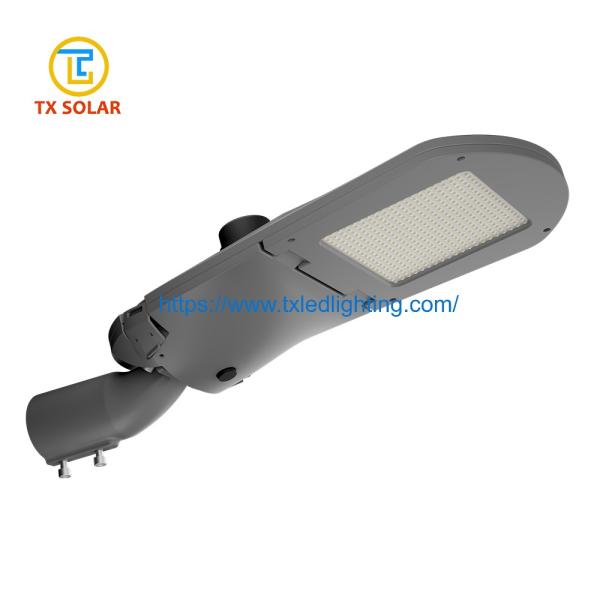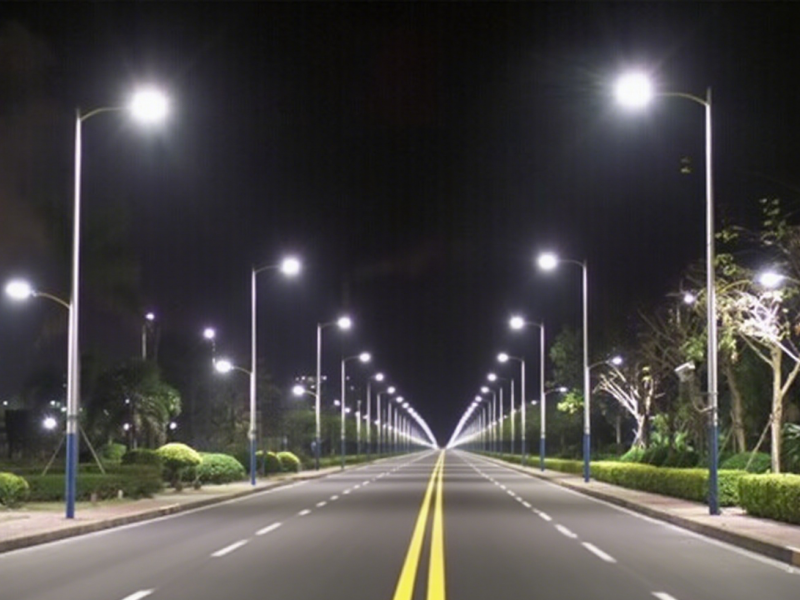Traditional light source lamps generally use a reflector to evenly distribute the luminous flux of a light source to the illuminated surface, while the light source of LED light fixtures is composed of multiple LED particles. By designing the illumination direction of each LED, the lens angle, the relative position of the LED array, and other factors, the illuminated surface can obtain uniform and required illumination. The optical design of LED light fixtures is different from that of traditional light source lamps. How to use the characteristics of LED light sources to improve the efficiency of LED light fixtures is a key factor that must be considered in the design.
 As a professional LED street lamp enterprise, Tianxiang’s products are of high quality. They use high-brightness and long-life LED chips with a luminous efficiency of more than 130lm/W and a lifespan of more than 50,000 hours. The lamp body is made of aviation-grade aluminum + anti-corrosion coating, which is weather-resistant and suitable for extreme environments of -30℃ to 60℃.
As a professional LED street lamp enterprise, Tianxiang’s products are of high quality. They use high-brightness and long-life LED chips with a luminous efficiency of more than 130lm/W and a lifespan of more than 50,000 hours. The lamp body is made of aviation-grade aluminum + anti-corrosion coating, which is weather-resistant and suitable for extreme environments of -30℃ to 60℃.
(1) Calculation of illuminance of LED light fixtures
On the surface of the illuminated object, the luminous flux received per unit area is called illuminance, represented by E, and the unit is lx. The simulation illuminance calculation in the early stage of lamp design is a key step in the lighting design of LED light fixtures. Its purpose is to compare the actual requirements with the results of the simulation calculation, and then determine the type, quantity, arrangement, power, and lens of LEDs in the LED light fixtures in combination with the lamp shape structure, heat dissipation, and other conditions. Since the number of LEDs in LED light fixtures often reaches dozens or even hundreds, in cases where multiple approximate “point light sources” are arranged together, the point-by-point calculation method can be used to calculate the illuminance. The point-by-point calculation method involves calculating the illuminance at each LED calculation point individually and then performing superposition calculations to obtain the total illuminance.
(2)Light source efficiency, lamp efficiency, light utilization rate, and lighting system efficiency
In fact, for users, what they care about is the illuminance on the area or space that actually needs to be illuminated. LED lighting systems are usually composed of LED array light sources, drive circuits, lenses, and heat sinks.
(3)Methods to improve the efficiency of LED light fixtures and the light efficiency of lighting systems
①Methods to improve the efficiency of LED light fixtures
a.Optimize the heat dissipation design.
b. Select lenses with high light transmittance.
c. Optimize the arrangement of LED light sources within the luminaire.
② Methods for improving the luminous efficiency of LED lighting systems
a. Improve the luminous efficiency of LED light sources. In addition to selecting high-efficiency LED light sources, the heat dissipation performance of the luminaire should also be ensured to prevent excessive temperature rise during operation, which could lead to a significant drop in light output.
b. Select an appropriate LED lighting power supply topology to ensure the highest possible operating efficiency of the driver circuit while meeting specific electrical and driver requirements. Ensure the highest possible optical efficiency (i.e., light utilization) through reasonable luminaire structure and optical design.
The above is an introduction from Tianxiang, an LED street lamp enterprise. If you are interested in further industry knowledge regarding LED street lights, please contact us for more information.
Post time: Aug-27-2025





